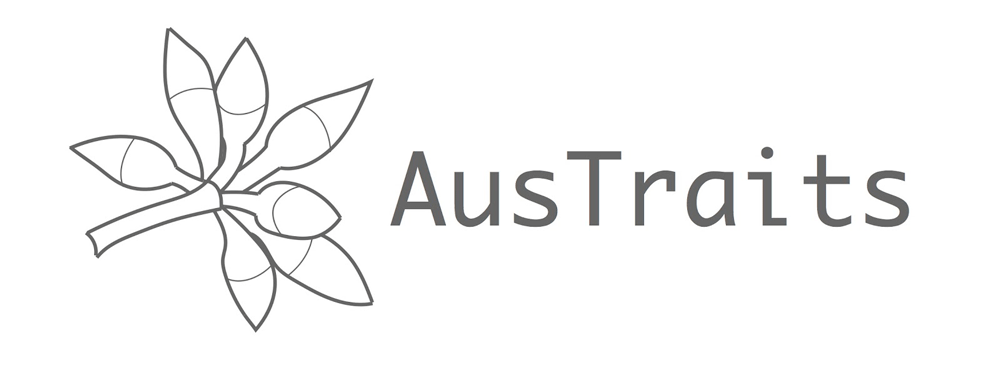Online Resources
Occurrence records map (0 records)




































Datasets
datasets have provided data to the Atlas of Living Australia for this species.
Browse the list of datasets and find organisations you can join if you are interested in participating in a survey for species like Leucopogon parviflorus ()
Types
Specimens
Images
Misidentified

Names and sources
| Accepted Name | Source |
|---|---|
| Leucopogon parviflorus () |
|
| According to:Council of Heads of Australasian Herbaria (2012), Australian Plant Census | |
| Published in:Lindley, J. (1832), The Botanical Register: Consisting of Coloured Figures of Exotic Plants, Cultivated in British Gardens; with their History and Mode of Treatment 18 [t. 1560] | |
|
G.Bentham, Fl. Austral. 4: 186 (1868) treats F.W.Sieber's Pl. Exsicc. manuscript name, Leucopogon lanceolatus, as referable to L. parviflorus. |
|
| Synonym | Source |
|---|---|
| Cyathodes parviflora () homotypic |
|
| Published in:Allan, H.H.B. (1961), Flora of New Zealand 1 [515] | |
| Leucopogon cygnorum heterotypic |
|
| Published in:Gandoger, M. (1918), Sertum plantarum novarum. Pars prima. Bulletin de la Société Botanique de France 65 [55] | |
| Leucopogon richei var. parviflorus () homotypic |
|
| Published in:Hooker, J.D. (28 July 1857), The botany of the Antarctic voyage of H.M. Discovery ships Erebus and Terror. III. Flora Tasmaniae 1(4) [249] | |
| Leucopogon richei var. parviflora heterotypic orth. var. |
|
| Published in:Hooker, J.D. (28 July 1857), The botany of the Antarctic voyage of H.M. Discovery ships Erebus and Terror. III. Flora Tasmaniae 1(4) [249] | |
| Leucopogon richei () var. richei heterotypic |
|
| Published in:Hooker, J.D. (28 July 1857), The botany of the Antarctic voyage of H.M. Discovery ships Erebus and Terror. III. Flora Tasmaniae 1(4) [249] | |
| Leucopogon richei () heterotypic |
|
| Published in:Brown, R. (27 March 1810), Prodromus florae Novae Hollandiae et insulae Van-Diemen, exhibens characteres plantarum quas annis 1802-1805 [541] | |
| Leucopogon polystachyus misapplied |
|
| Published in:Brown, R. (27 March 1810), Prodromus florae Novae Hollandiae et insulae Van-Diemen, exhibens characteres plantarum quas annis 1802-1805 [542] | |
| Styphelia richei heterotypic |
|
| Published in:Labillardière, J.J.H. de (1805), Novae Hollandiae Plantarum Specimen 1(5-7) [44, t. 60] | |
| Styphelia parviflora homotypic |
|
| Published in:Andrews, H.C. (1803), The Botanist's Repository for New, and Rare Plants 4 [t. 287] | |
| Styphelia gnidium heterotypic |
|
| Published in:Ventenat, E.P. (1803), Jardin de la Malmaison 1(4) [23, t. 23] | |
| Common Name | Source |
|---|---|
| Coast Beard-Heath preferred Australia Australia | |
| Coast Beard Heath Australia Australia |
|
| Coast Beard-Heath Australia Australia |
|
| Coast Beard-Heath Australia Australia |
|
| Coast Beard-Heath Australia Australia |
|
| Coastal Beard Heath Australia Australia |
|
| Name | Source |
|---|---|
| Leucopogon parviflorus accepted |
|
| Leucopogon parviflorus () accepted |
|
|
G.Bentham, Fl. Austral. 4: 186 (1868) treats F.W.Sieber's Pl. Exsicc. manuscript name, Leucopogon lanceolatus, as referable to L. parviflorus. |
|
| Identifier | Source |
|---|---|
| http://id.biodiversity.org.au/node/apni/2886078 Taxon unknown |
|
| http://data.nzor.org.nz/names/e8998f91-6b71-4404-8d81-d9c5981fc0e2 Scientific Name current |
|
| https://id.biodiversity.org.au/instance/apni/752570 Taxon Concept current |
|
| https://id.biodiversity.org.au/name/apni/112236 Scientific Name current |
|
| https://id.biodiversity.org.au/node/apni/2886078 Taxon current |
|
| NZOR-6-19515 Taxon current |
|
Classification
- kingdom
- Plantae
- phylum
- Charophyta
- class
- Equisetopsida
- subclass
- Magnoliidae
- superorder
- Asteranae
- order
- Ericales
- family
- Ericaceae
- genus
- Leucopogon
- species
- Leucopogon parviflorus
- variety
- Leucopogon richei var. γ
Charts showing breakdown of occurrence records (0 records)
Name references found in the Biodiversity Heritage Library
| Data sets | Licence | Records |
|---|

The trait data shown here are a selection from AusTraits, an open-source, harmonised database of Australian plant trait data, sourced from individual researchers, government entities (e.g. herbaria) or NGOs across Australia. Traits vary in scope from morphological attributes (e.g. leaf area, seed mass, plant height) to ecological attributes (e.g. fire response, flowering time, pollinators) and physiological measures of performance (e.g. photosynthetic gas exchange, water-use efficiency.)
These traits are a sampler of those available in AusTraits. The data presented here are summary statistics derived from all field-collected data on adult plants available from AusTraits. Since the data presented are derived from the wide variety of sources in AusTraits, both the numeric trait statistics (min, mean, max) and categorical trait summaries (frequency of each trait value) that have been merged together could include data collected using different methods. The values presented for this species may reflect a summary of data from one or many sources, one or many samples from one or many adult plants at one or many locations. They may therefore differ from those presented elsewhere on the ALA platform and users are encouraged to download a spreadsheet of the full AusTraits data for this species via the download CSV button to view the accompanying details about the data sources before further use.
Categorical Traits
* Data sources in AusTraits report multiple values for this trait, suggesting variation across the taxon's range and life stages. Please download the raw data with information about the context of data collection to assess whether they are relevant to your project.| Trait Name | Trait Value | Definition |
|---|
Numeric Traits
| Trait Name | Min | Mean | Max | Unit | Definition |
|---|

